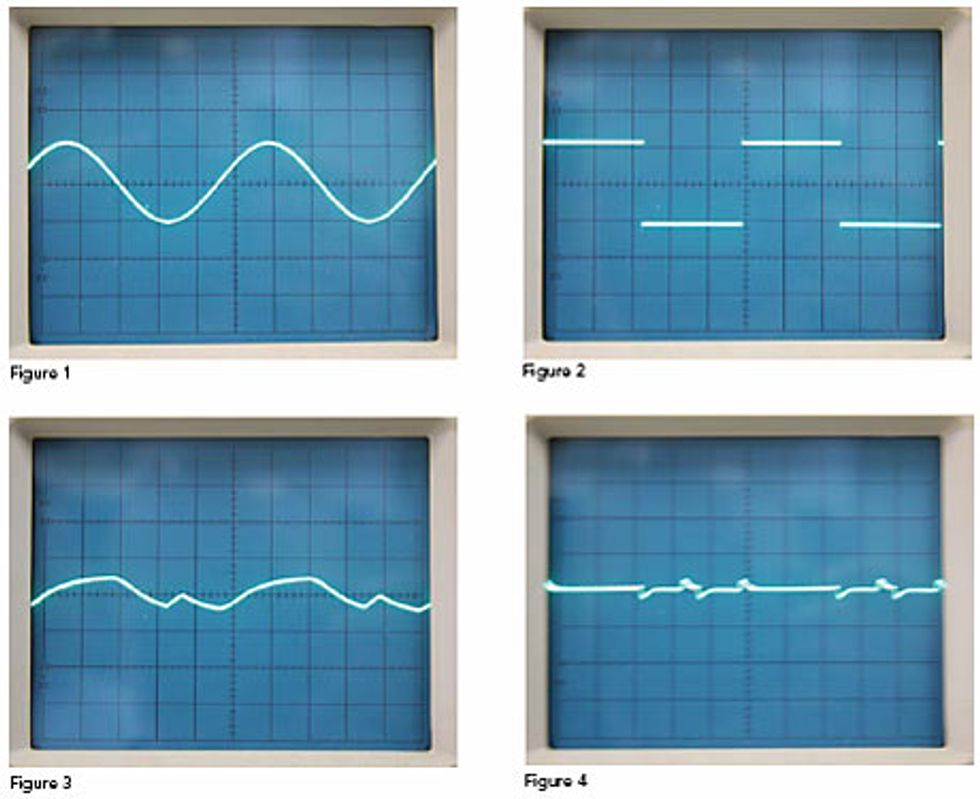Last month we talked about tube distortion and how overdriving a larger signal into a tube can cause it to distort. Keep in mind that these terms are often
Last month we talked about tube distortion and how overdriving a larger signal into a tube can cause it to distort. Keep in mind that these terms are often used interchangeably. The term overdrive is typically used to describe milder signal clipping, while distortion tends to refer to the hard stuff.
It should be noted that any type of signal manipulation can be used in a musical or non-musical fashion. In general, tube generated overdrives and distortions tend to be much more pleasing and touch sensitive than pedal derived sounds. Sometimes the harshest, ice-pickin- the-ear tone will better serve the song and its communication aspect, but don’t get me started! More often than not, distortion levels are way out of whack, especially in live situations. When the average guitar slinger practices alone, the tone is saturated to the gills. Take that same tone – commonly referred to as “my sound” – and try it in a band situation. You’re often greeted with mush, mud and pierced ears.
Live sound can be very good. The lab rats here at Creation Audio Labs are well aware of how good gear can sound, and unfortunately, how often it doesn’t due to incorrect use. In all fairness, the blame lands squarely in one of two places. First, band members shoulder some of the responsibility by lacking the knowledge to achieve good tones at reasonable volume levels, as well as not understanding proper placement, such as where to put their amps and mics. Second, live sound engineers may not be that well versed on how to use either the gear or the room to achieve a good sound. When an inexperienced band is coupled with a novice sound guy, audience members suffer.
Bryan Lionman recently sang the praises of working with the sound guy to give the band the best shot at a good sound, emphasizing that it starts with the band. Sure, a crappy sound guy can mess you up, but they can never “fix” a band that doesn’t sound good in the first place. So remember, before my inbox gets slammed by thousands of angry emails, it’s a two-way street. A ton of great sounding bands and incredibly capable live sound people are out there making it happen, night after night.
But getting back to distortion in a band situation, less is always more. And by that I mean less is always more. The vocals and the cymbals are competing with the guitars 99 percent of the time. Add in bad EQ and improperly powered high-frequency drivers, and the ice pick heads straight for your ears. No wonder live gigs get a bad rap.
Next up is the inevitable too-loud bass. Low frequencies need to be handled properly to get a good sound for the entire room, not just on stage. Bass players need to remember that what they’re hearing on stage tends to bear little resemblance to what the audience is hearing. Again, our mantra here is “less is more.”
Let’s take a closer look at the differences between overdrive and distortion. In the lab where we make and fix audio gear, we rely on oscilloscopes and other prohibitively expensive equipment to actually look at signals. In general, audio is comprised of sine waves with varying degrees of pleasantness and/or harshness. Pleasant sounds have nice, round flowing patterns. Harsh tones display rough edges, eventually appearing more “square.” For audio analysis, we use a totally square wave at 1kHz, and trust me, it sounds horrible. The visual representation of the waveform can reveal many things about the technical aspects of the sound, but won’t necessarily determine if that sound is “good” or “bad,” or, the communication value of the sound.

Fig. 1. 1kHz sine wave – pure tone, no distortion
Fig. 2. 1kHz square wave – good looking square wave, “bad” sound
Fig. 3. 1kHz sine wave run through a trusty Jekyll & Hyde pedal, on the OVERDRIVE side.
Fig. 4. The same 1kHz sine wave through the Jekyll & Hyde on the DISTORTION side.
Keep this issue handy. Next month we will do some more dissecting and will refer back to these photos. Once this series is complete, I promise you will have a better grasp of how this applies to your music than ten legions of your peers.
Sarge out.
Gary "Sarge" Gistinger
President, Creation Audio Labs, Inc.
creationaudiolabs.com

